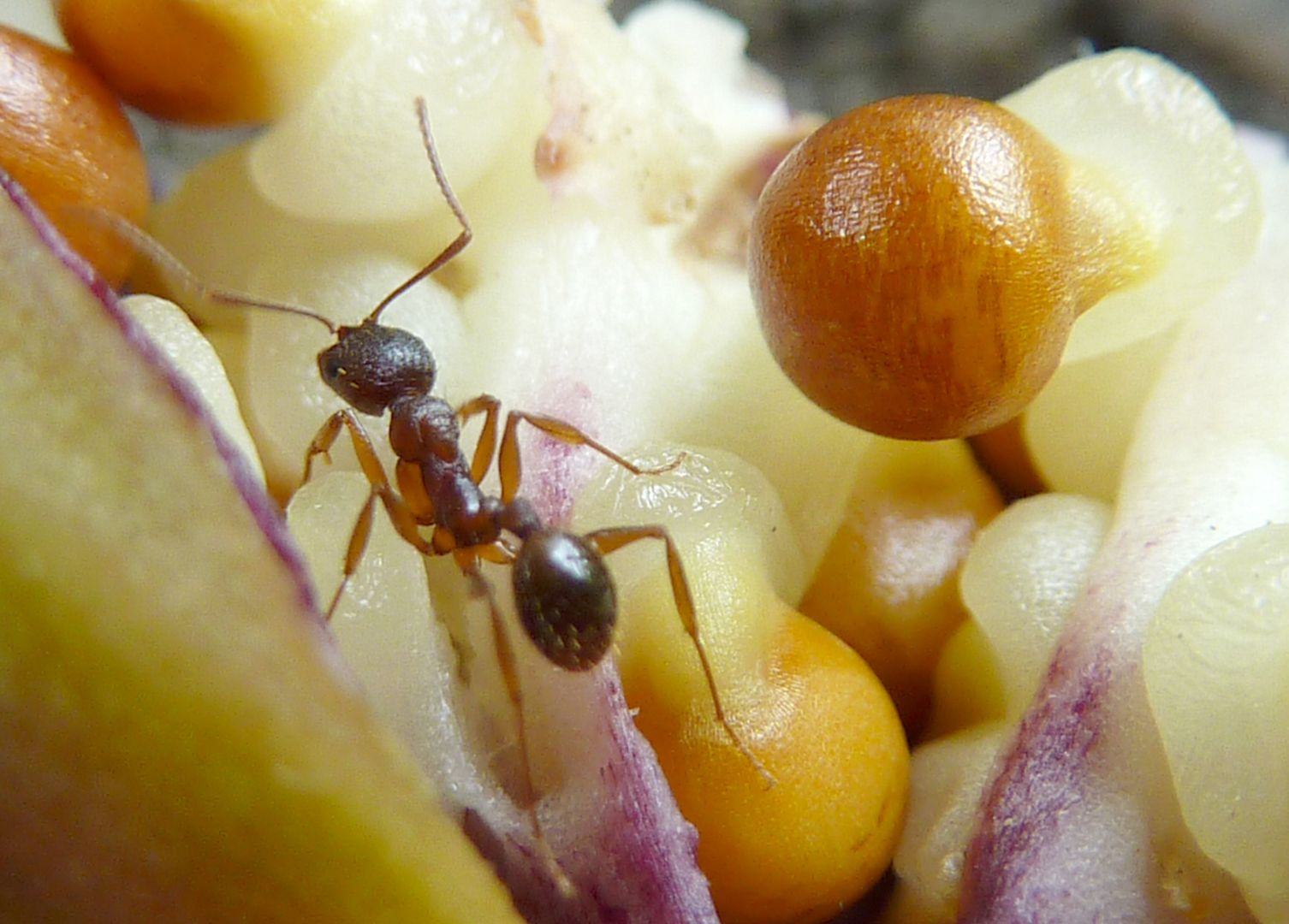A new study came to my attention today titled "Competition as a Merchanism Structuring Mutualisms" by Robert J. Warren II1, Itamar Giladi2, and Mark A. Bradford3
I haven't read it fully yet however I think I got the gist. They setup two plots of Asarum arifolium (Wild Ginger) and Anemone americana (Hepatica), two plants that disperse their seeds via Myrmecochory. Basically a substance called elaiosome (ant food) is attached to the seed, the ants find the seeds and are encouraged to bring them back to the nest where they are planted. The authors point out that the Hepatica flowers earlier and produces smaller seeds than the Wild Ginger which flowers later and has slightly larger seeds. They suggest that larger seeds are always favored by the ants, and true enough larger seeds tend to have larger packets of elaiosome on them. Thus the Heptaica produces smaller seeds because it can get away with it and not have to compete with the larger seeds of the Wild Ginger.
This study could be expanded had they included Woodland Poppy and Trilliums which also follow this pattern, but Wild Ginger seeds are larger than Woodland Poppy... and then their argument falls apart completely when you include Violets which have seeds smaller than Hepatica. Twinleaf also has Trillium-sized seeds so there isn't a whole lot of support here.
We've already known that ants favor larger seeds because they plants produce better seeds and a higher quality of elaiosome on those that were pollinated better than others. Open a Trillium seed pod and you'll see some seeds are half the size of all the rest and even some that didn't even develop at all.
I'll read the rest of the study in full later on.
